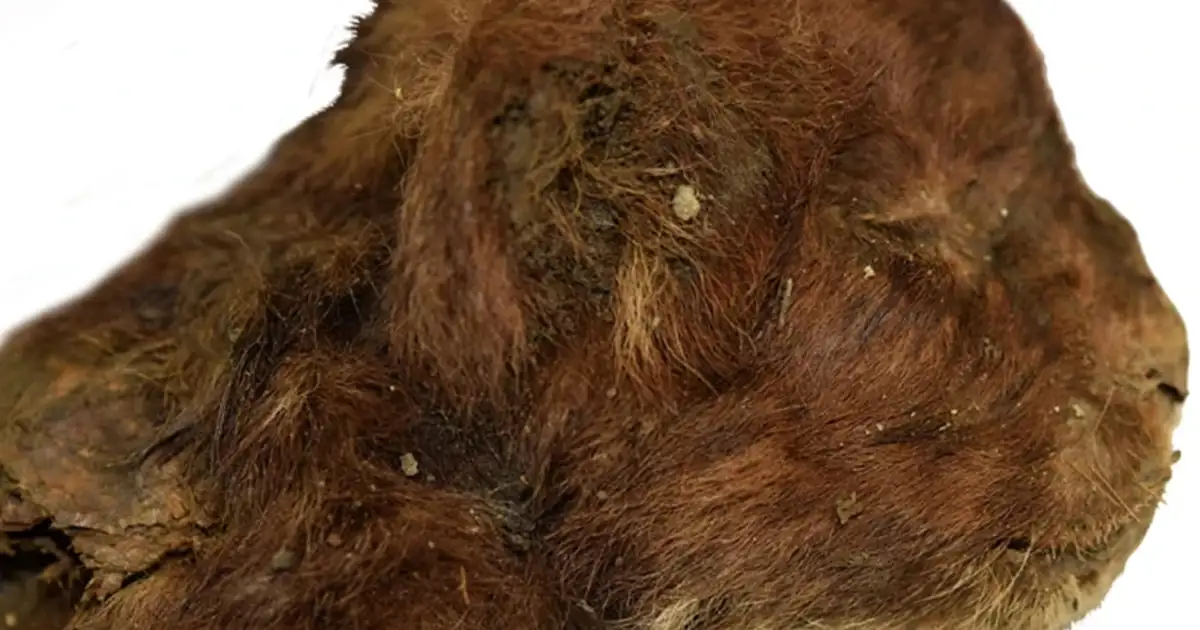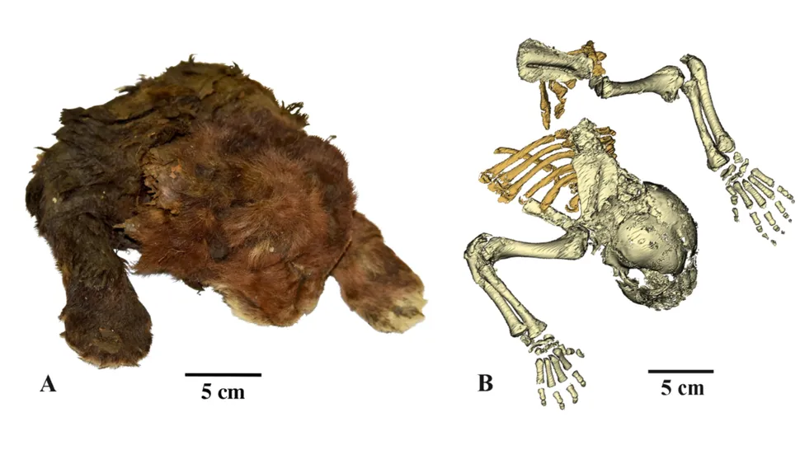35,000-year-old saber-tooth calf found with intact head

He saber tooth tiger It is one of the most emblematic and fascinating predators of prehistory, but What were the cubs of this fabulous predator really like?
Scientists have unearthed the mummified body of a saber-toothed tiger cub (Homotherium latidens) is unusually well preserved, having lain in Siberian permafrost for 35,000 years, according to radiocarbon dating.
Little cat He died when he was barely 3 weeks old. (although the circumstances of the animal’s death are unknown), and with this incredible discovery we have an unprecedented new page into what these legendary creatures were like and how they evolved.
How is it so well preserved?
Despite being 37,000 years old, subzero temperatures A very well preserved specimen has been preserved from the Siberian tundra; so much so that His fur, head, body and limbs are completely intact. They even found sideburn hair, mummified meat and muscles. Such well-preserved remains of saber-toothed tigers are extremely rare. His frozen remains were originally found near the Badyarikha River in northeastern Yakutia, Russia, and experts are now detailing the results of their analysis in the journal Scientific Reports.
“For the first time in the history of paleontologyThe appearance of an extinct mammal, which has no analogues in the modern fauna, has been studied,” explain RAS specialists.


3D reconstruction of the skeleton of a small saber-toothed tiger.
Opening details
The frozen corpse of a cat reveals that H. latidens was well adapted to Ice Age conditions, say the researchers, who also found that had some differences in relation to lion cubs (Panther Leo) modern. For example, its neck was twice as thick as that of a modern lion cub; His ears were smaller, but his mouth was larger; Likewise, the saber-toothed tiger had wider legs and lacked wrist pads, allowing the species to move easily through the snow, while its thick fur protected it from both predators and polar temperatures.
Although it is unclear how this particular individual died, researchers speculate that the species lived in Eurasia. until about 10,000 years agowhen the last ice age ended. “Discovery of the Mummy” H. latidens in Yakutia radically expands ideas about gender distribution and confirms its presence in the late Pleistocene of Asia.“, experts say.
If there is any detail to be regretted in this important discovery, it is that, since the little sabertooth was precisely at a young age, it had not yet grown the characteristic teeth of its genus – some long curved fangs that can grow up to 20 centimeters in length, in case Smilodonand with which they delivered precise and powerful bites to their prey – so this is something that has not been studied. But without a doubt, it is an invaluable resource to better understand the history of this ambush animal, which specializes in stealth and attack force as a precise hunting strategy. capable of destroying large herbivores including bison and camels.
For now, investigation continues and promises to deepen our understanding of this impressive extinct species.
